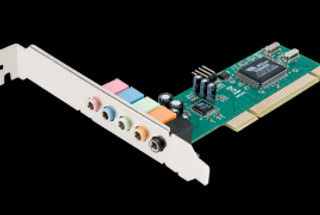
Input devices



Input Peripherals are all those devices that allow entering data or information into a computer for it to process or order. Although the term "peripheral" often implies the concept of "additional but not essential", many peripherals are fundamental elements for a computer system. However, being the primary sources of input, they can be considered as extensions in a system.
An input device is any peripheral of the computer equipment used to provide data and control signals to an information processing system. The input and output peripherals make up the hardware interface, for example between a scanner.
Examples: keyboard, optical mouse, scanner, microphone, joystick, gamepad or video game controller, which are connected to the computer and controlled by the microprocessor.
Many input peripherals can be classified according to:
-
The entry modality
for example:
-
the mechanical movement,
-
sonorous,
-
visual, etcetera.
-
If the entry is:
-
-
discrete (for example, keystrokes), or,
-
continuous (for example, a position, although digitized in a discrete amount, is fast enough to be considered continuous).
-
The pointing devices or pointing devices, are input devices used to specify a position in space, can be classified according to:
-
If the output is:
-
direct, the entrance space coincides with the exhibition space, that is, indicating that it is done in the space where the visual feedback or the cursor appears. The tactile screens and the optical pencils count on the direct contribution;
-
indirect, examples of indirect input participation include the mouse and the trackball.
-
-
If the position information is:
-
absolute (for example, on a touch screen) or,
-
relative (for example, with a mouse that can be lifted and repositioned).
-
The direct output is almost necessarily "absolute", but the indirect output can be "absolute" or "relative". For example, the digitization of graphic tablets that do not have an embedded screen, have the 'indirect' input and the sense 'absolute' positions, and often runs in an "absolute input" mode, but can also be configured to simulate a "relative entry" mode when the pencil or disk can be lifted and repositioned.
Output devices
An output peripheral is an electronic device capable of printing, displaying or emitting signals that are easily interpretable by the user. Basically, an output peripheral has the function of showing the user operator of the computer the result of the operations carried out or processed by it.
That is to say that by using the peripheral output the computer communicates and shows us the result of our work, being able to observe them easily through the monitor or the printer, the two most used output peripherals. But there are also other types of peripheral output, which include audio boards, tools and much more.
As we mentioned, the most common output peripherals are the monitor and the printer, and below these lines we can know a little more closely some of its most relevant technical characteristics, without forgetting the assumptions of the other categories of output peripherals.
Monitors
The monitor of our PC is undoubtedly the most important output device of the whole, because without it we could not know what is happening on the computer.
This display device is constituted by several luminous points called pixels, the number of pixels being what determines the graphic resolution thereof; the greater the number of pixels, the higher the resolution, because the same image is reproduced in a greater number of points, improving the visualization of the details.
There are two main types of monitor, the so-called CRT or cathode ray tube and the new flat panel monitors, of which we can find on the market two variants, LED or LCD.


Projectors
Basically, a projector is a device capable of emitting the images created with the computer, like monitors, but with the advantage of being able to do it on any surface, as long as it is flat and light in color. It is also capable of projecting large images with excellent quality.
In the market there are several types of projectors, the most common being LCD projectors and pico projectors, however there is a third category that includes 3D projectors. It should be noted that the projectors as output peripherals are very common to show all kinds of presentations, and their connection is very similar as well, since they have VGA and HDMI type ports.
Printers

The printer is another of the most important output peripherals, since they were designed to perpetuate on paper the results or data processed by the computer. Unlike in the case of the monitor, the printer is not an essential device, but it is especially important when we need to represent the information processed by the PC on paper in the form of lists, graphics, drawings, images and so on.
Currently there are several types of printers, the most commonly used at the time laser and multifunction printers, especially in the field of offices and home. From this point we will know the main characteristics of both types of printers, as well as the basics about other types of printers less known to most users.
Audio: Audio boards, speakers and headphones.

Without a doubt, the sound board of a computer, and the speakers and headphones that accompany it, are of utmost importance for the user, since in addition to providing the pleasure of listening to music while working, are responsible for reproducing the various sounds and messages that the PC issues to notify us of the events that are happening in it.
At this point, the speakers, next to the headphones, are the most used devices to listen to music through the audio player of our operating system. Currently we can audio boards to which you can connect both stereo speakers, ie 2 channels, left and right, and multichannel, consisting of up to 7 different audio channels.
It should be noted that the audio boards can also be considered as an input device, since they offer connections for plugging microphones and other types of accessories for the input of sound to the computer.
Plotter of printing and cutting.
Basically, a plotter is nothing more than a very large printer, dedicated exclusively to the graphic arts, since with them we can make all kinds of impressions of great size and with an incredible quality. At this point we must emphasize that there are two types of plotter, the printing plotter, which we just talked about, and the cutting plotter, which is also a printer, but instead of making drawings, it creates strokes using a knife on a material self-adhesive

Mixed Devices
A mixed peripheral is that peripheral device that can fulfill both input and output functions. They are also called input-output devices or in English: input / output device.
For example, hard disks, floppy drives, magnetic tape drives, CD / DVD readers, ZIP drives, flash drives, network cards, modems, video capture / output cards, etc.
The touch screen is a device that is considered mixed, since in addition to displaying information and data (output) can act as a data entry device (replacing, for example, mouse functions).
Also included in this category are photocopiers and multifunction printers, since both peripherals can scan, print and photocopy.
